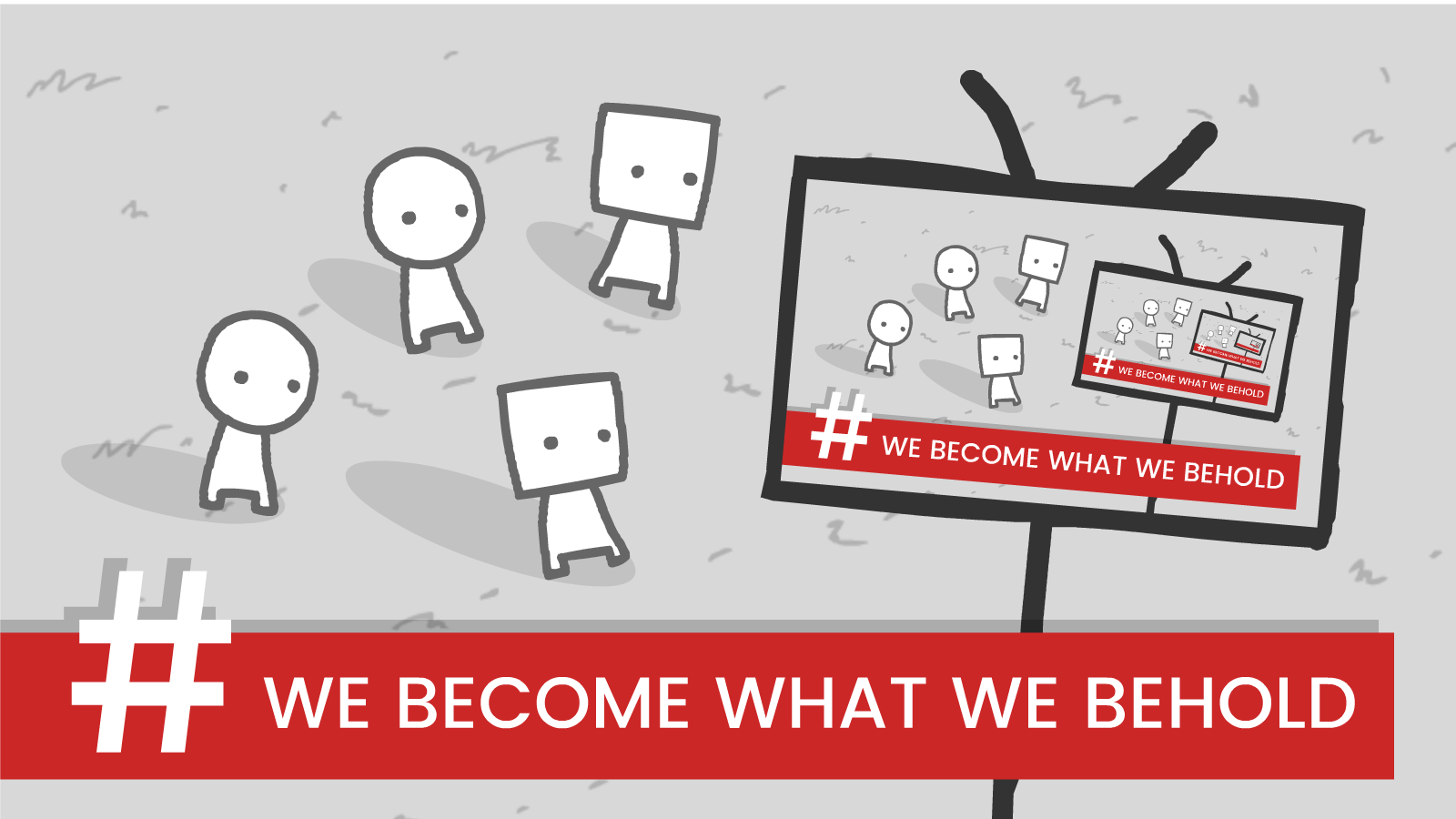We Become What We Behold is a brief point-and-click game that has a deep societal message. Players simply take photos of simple moments in the lives of round and square characters, but from there the entire community in the game gradually changes its behavior, creating funny and thoughtful media loops.
"We Become What We Behold" is a unique creation of developer Nicky Case. Released in October 2016 and updated two years later, the game is not a formidable action game or a complex role-playing story. It's a delicate sociological experiment that lasts approximately five minutes and leaves you with questions that can bother you for hours.
The first quote is very important: "We shape our tools, and then our tools shape us." Here, the "tools" are the camera and the media.
The game is extremely simple. You control a... sky boss, with only one mission: use the mouse to take pictures of the tiny inhabitants of the ground. The game world is a small space where "normal peeps" - funny creatures with square and round heads - are busy moving.
However, each photo you take is not simply a moment. It is immediately broadcast on the "news" - a TV in the middle of the screen for everyone to see. And this is when the magic (or curse) happens: What you decide to report will directly shape the behavior of that entire society.

He stands out from the crowd. Try taking a picture of him, what happens? Immediately, the hat becomes a trend! All the "normal peeps" rush to find a hat for themselves. You've just created a hot trend.
If you keep taking pictures of people wearing hats, the crowd will quickly get bored. "Who wants to see boring things?" - Hats suddenly become outdated. You just saw the end of a trend.
A very cute square-round couple. Take a picture of them, what do you expect to see? But yet, the news on TV is shocking: "LOVE IS CONTAGIOUS?" Everyone is avoiding and shaming the pair. You just saw how cruel the media can be when they turn something beautiful into a shocking headline.
This is the moment of truth. A red character is screaming. At first, taking a picture of it alone is fine. The game prompts you: "CATCH 'EM DOING SOMETHING." And when you capture it screaming at someone, the real media frenzy begins.
After the "angry" photo is broadcast, the game world changes forever. Fear and anger spread faster than a fashion trend. "Normal peeps" begin to doubt and shun each other. The difference between square and round heads, which used to be just normal characteristics, suddenly becomes a cause of conflict.
The more you photograph conflict scenes, the more you report hatred, the more society becomes disordered and violent. It creates a vicious cycle with no way out: Sensational media coverage -> Public panic and hatred -> More sensational events to report. And so, everything speeds towards a tragic and predictable ending.
The game exposes the truth that media not only reflects reality, but also creates reality. We see the world through the lens of what is reported, and unconsciously imitate that behavior.
Anger, fear, and conflict have a terrible attraction and spread, easily overwhelming positive, kind stories. "Who tunes in to watch people get along?" - The in-game quote is a bitter self-question for the news industry.
You - the player - are the representative of media workers, content creators, and even individuals on social networks. With every share, with every photo you post, how are you helping to shape the world?
We Become What We Behold is a social experiment wrapped in a short game. Each click of the camera is like an editorial choice, and the chain reaction that follows reveals how small details are blown out of proportion and then twisted into a whole community. The game shows how collective attention can be manipulated, and how seemingly harmless information loops can slip into a different orbit.